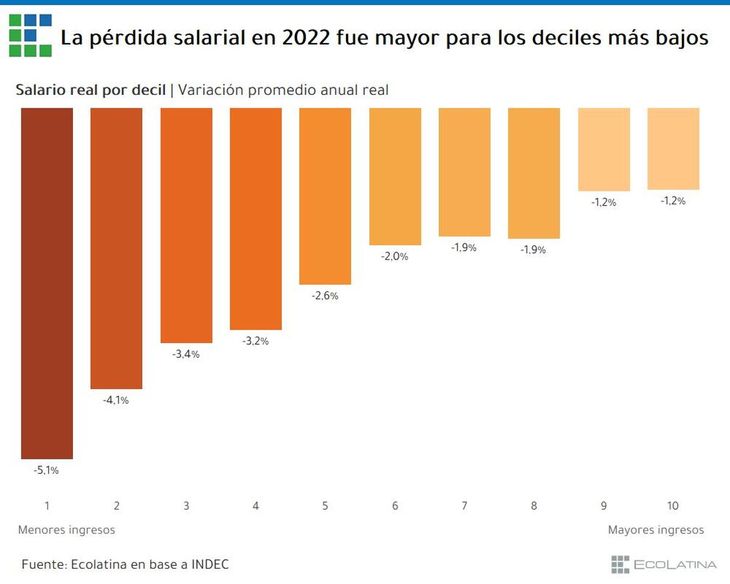hit to salary
“While in the first half of the year it had a relatively greater impact on the poorest (accumulated 36.8% for decile 1, 1 pp above decile 10), in the second half the effect was reversed and reached 42.7% for the first decile and 41.6% for the tenth”, details the investigation.
In this regard, he asserts that “A good part of this is explained because in the first semester food inflation (which represents 40% of the total basket of the first decile and only 13% in the tenth) was 0.5 pp higher than the general level, while it was 0.5 pp lower in the second part of 2022”.
1.jpg
In another passage, Ecolatina realized that “unlike the relative homogeneity that inflation showed throughout society, labor income showed strong differences. During 2022, the salary associated with the highest-income sectors (decile 10) grew 15 pp year-on-year above those linked to those with fewer resources (decile 1)”.
As they remarked, “This is mainly explained because in the latter there is a predominance of informal workers (whose wages grew 65% in the year, almost 30 pp below inflation) and self-employed (generally inserted in low-quality jobs).
Difference
For their part, “nearly 70% of the workers in the highest decile are registered -benefited by a shortening in the validity of joint negotiations- they were located 1 pp above annual inflation.”
“Thus, while the labor income of the richest half grew 90% year-on-year, those of the poorest 50% grew only 81%,” the text expands.
1.jpg

And he adds: “This fact does nothing more than enhance the regressive effect of the inflationary process, pressing for greater government assistance. It also explains the persistence of the “additional worker” effect: more members of the household who were not in the labor market turn to the search for work with the intention of making up for the deterioration in income”.
On this point, the consultant explained: “The intra-deciles discrepancy could be explained by the fact that the wages of the more affluent sectors, by being able to rebuild income more often and more in tune with inflation thanks to parity agreements, will continue to leave behind the labor income of the most neglected sectors, with the highest proportion of informal workers and a good part of the self-employed”.
Source: Ambito




